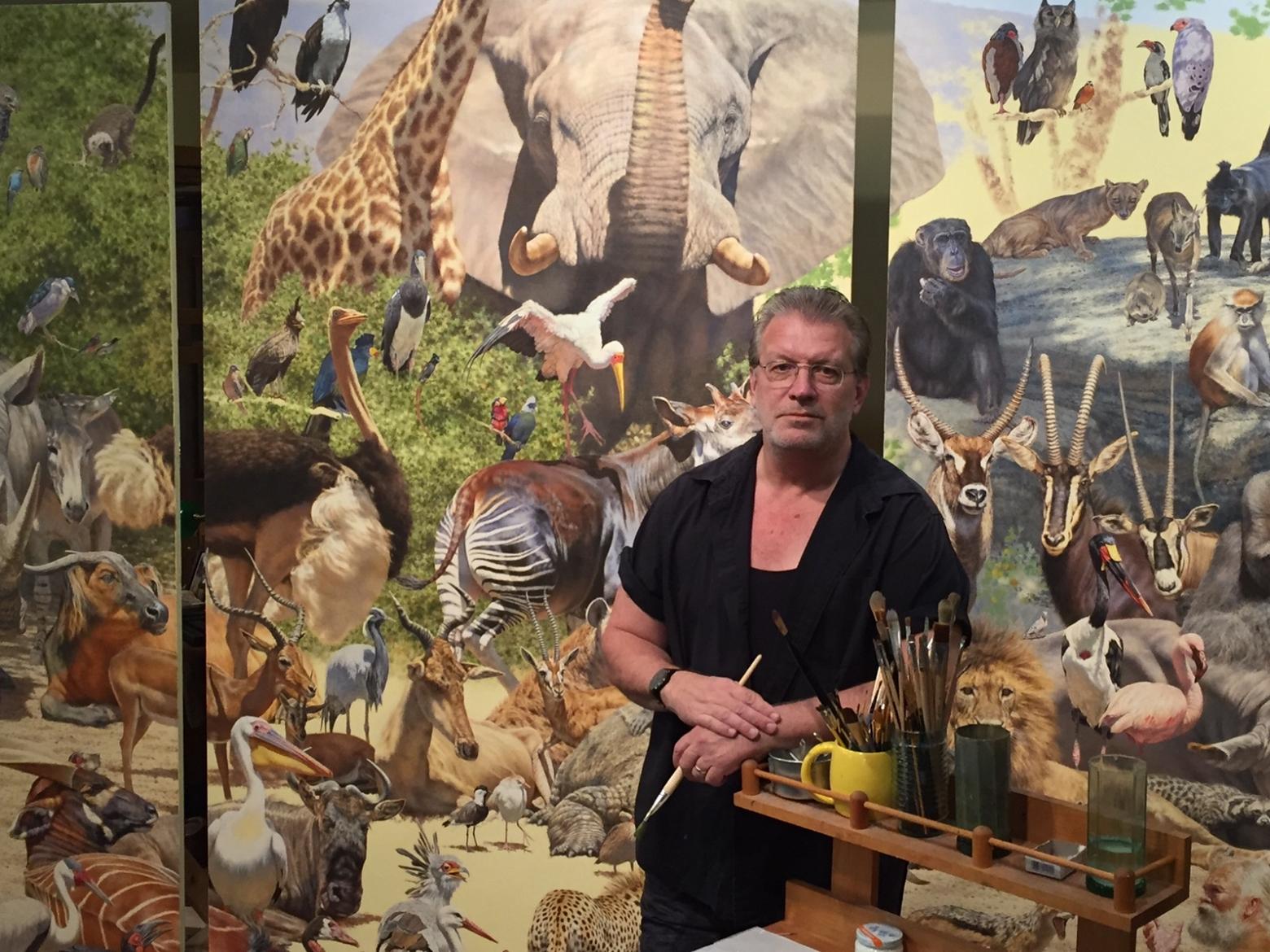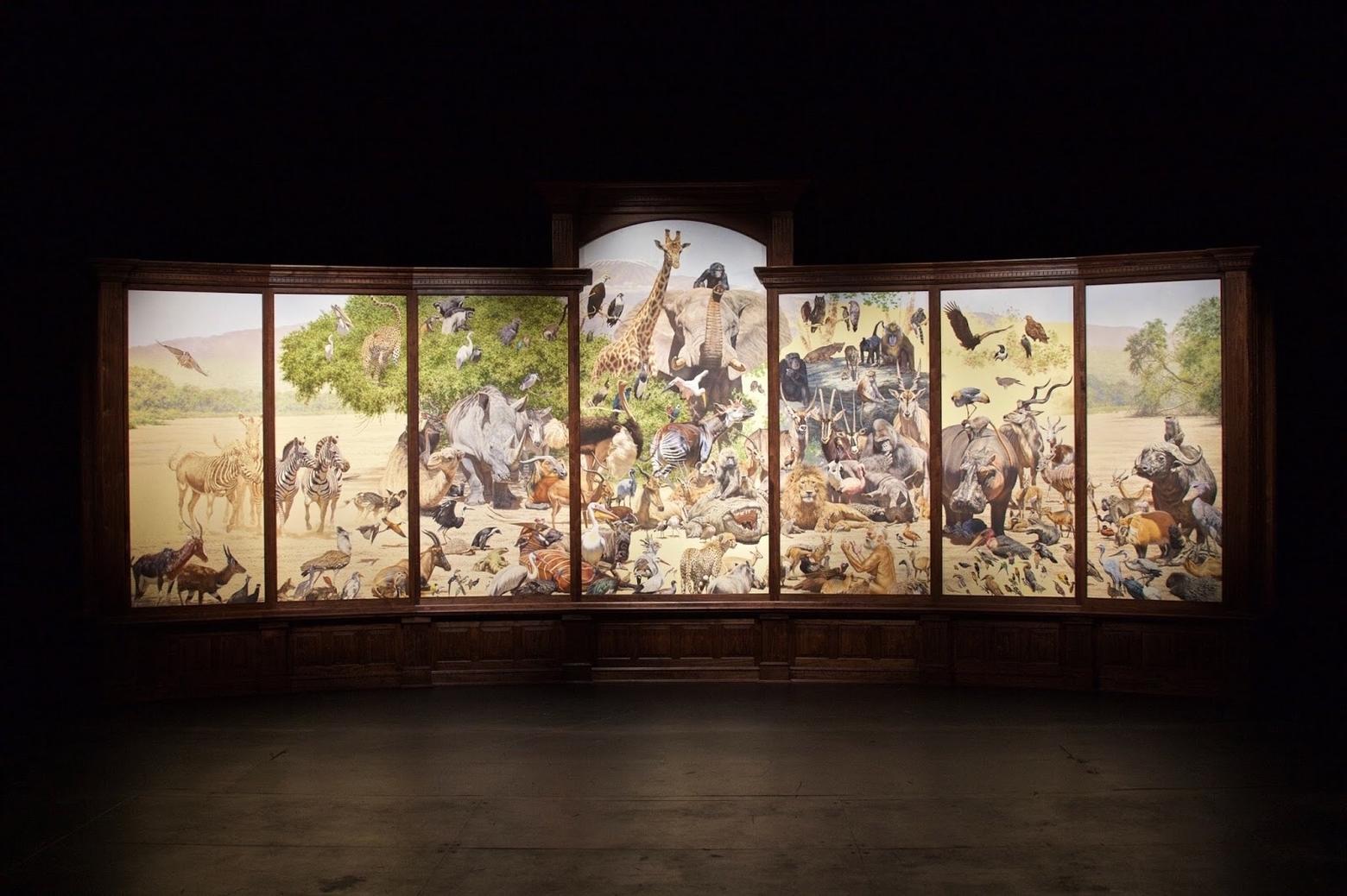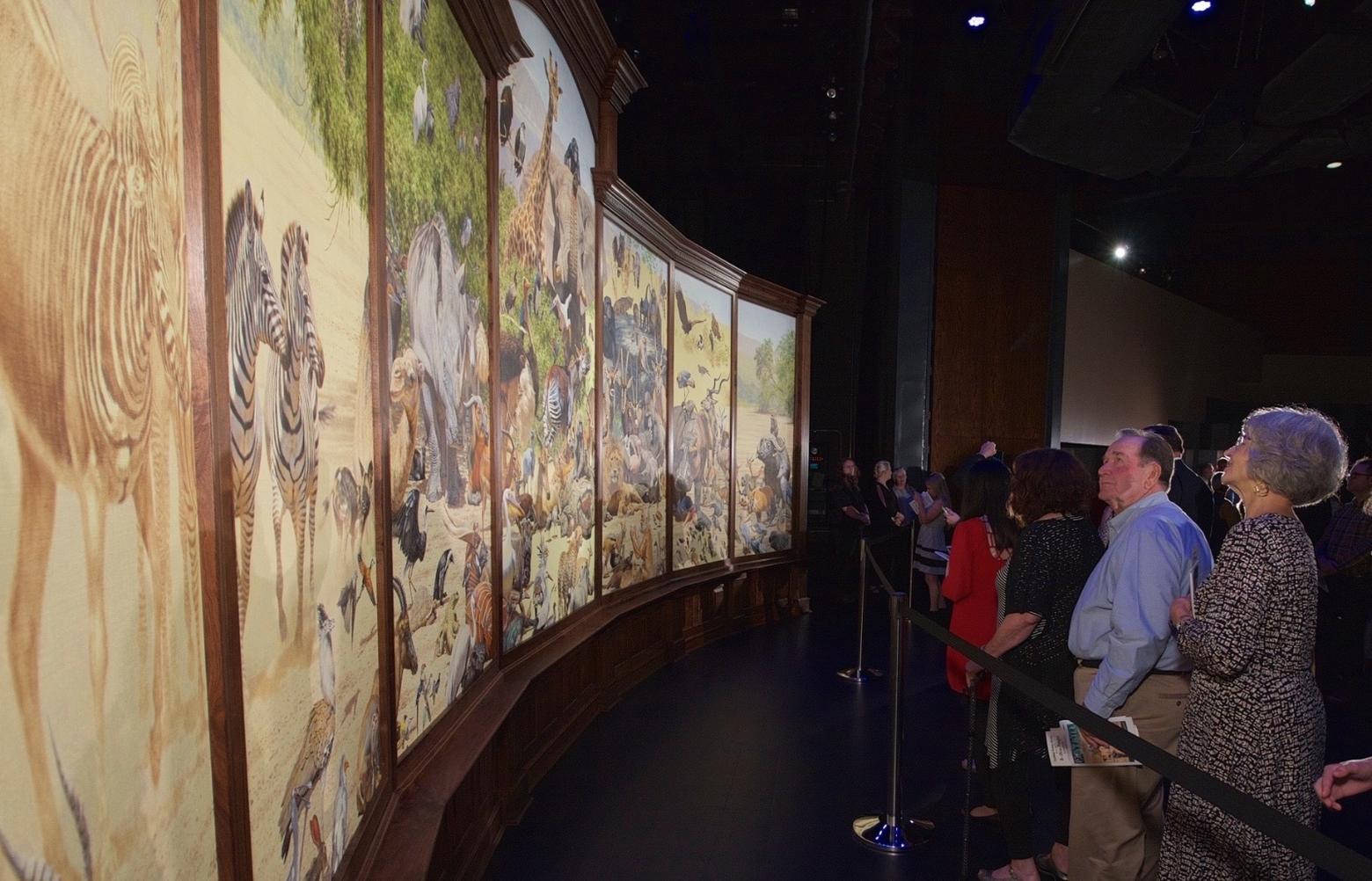Back to StoriesBrian Jarvi’s “African Menagerie” Shows How Fine Art Can Move The Masses
September 19, 2017
Brian Jarvi’s “African Menagerie” Shows How Fine Art Can Move The MassesUnprecedented Wildlife Painting—30 Feet Across And Featuring 209 Species— Was Partially Inspired By Thinking About Greater Yellowstone
Normally, encounters with fine art are personal affairs. Paintings might hang in museum galleries, attracting
long lines of people, but when they stir the soul, they do it one viewer at a
time.
Never before had I witnessed a large crowded auditorium erupt
spontaneously into a standing ovation with an unveiling of “wildlife art”.
But it happened last weekend in Grand Rapids, Minnesota when artist
Brian Jarvi gave more than 700 people a sneak preview of his epic new
masterpiece “African Menagerie: In Inquisition.”
I’ve been writing about wildlife art for three decades. One of the main criticisms, valid in my
opinion, is that, yes, the genre has talented painters and sculptors very good at
making pretty, superficial portrayals of animals, but so few produce works that
force us to think.
“African Menagerie” seizes our attention first with its size and
the scale of what it covers. Measuring 30 feet across and climbing at its
highest point to 1.5 stories tall—there you see the largely snowless profile of
Mount Kilimanjaro—the artwork features 209 African wildlife species converging
across seven interlocking panels.
However, the greatest impact is one that transcends physical
dimensions. Jarvi’s intent is to engage us with an existential question: Are 21st century humans doing
enough to preserve the richness of biodiversity we now hold in our hands?
While “African Menagerie” is unprecedented as a work of modern
wildlife art, it historically follows in the tradition of other narrative paintings
that asked important social questions, such as Raphael’s The School of Athens”
located in the Vatican and Hieronymus Bosch’s triptych “The Garden of Earthly
Delights” in Madrid’s Prado.
“African Menagerie”, too, is a grand narrative painting filled with
dozens of coded visual messages. Jarvi’s overarching theme is wildlife
conservation and the need for humans to be better stewards, but he isn’t
delivering a lecture.
From the moment he conceived of African Menagerie years ago, he wanted
it to be accompanied by the term “an inquisition”, meaning “a period of
prolonged and intensive questioning or investigation.”
Known for his dramatic predator and prey scenes, Jarvi has been to
Africa a dozen times on research trips yet part of his inspiration, he admits,
came from visits made to Greater Yellowstone.
Our region has an impressive abundance of species large and small,
but whether here or halfway around the world, he’s not convinced we spend
enough time reflecting on nature’s interconnections and, most importantly, how ecosystems
are unraveling.
“I wanted to attempt
a composition that had never been done before; that would bring the viewer
inside a panorama where you can let your own imagination be your guide—to
reflect and observe and feel the same sense of humility and reverence that I
do,” he says. “I wanted viewers to be able to see something new with every
viewing and to let beauty open our minds to a new level of awareness.”
Cleverly, Jarvi draws us in by using the patterns, shapes and
outlines of iconic species we instantly recognize—elephant, mountain gorilla, zebra,
giraffe, Cape Buffalo, chimpanzee and two species of rhino (one of which is now
extinct in the wild). From there our
eyes float between dozens upon dozens of others, many of them imperiled. Not only
does the colorful massing inspire awe but it makes clear the magnitude of what’s
at stake.
“In other words, It is my hope viewers will
open their minds to considering other creatures that are just as important in
the big picture but often overlooked,” he says. “Seeing them represented in the
larger kingdom of nature and then asking the viewer to wonder what would be
missing were they removed from existence?”
The animals form a confluence around a figure that Jarvi has dubbed
“omega-man” but this is not a meeting based upon reverence for Homo sapiens; instead
it represents a moment in which wildlife demands that humankind explain its
actions.
“By the decisions
we are making and the causes we support, we’re creating a world where many of
the subjects in “African Menagerie” might not be around in another 50 years,”
Jarvi says. “I wanted to give these animals a voice and help elevate awareness
about the threats to their survival but do it in a way that comes across,
foremost, as a celebration. The challenges facing Africa are a symbol for the
world.”
Related Stories
January 26, 2018
Imagine Foreign Invaders Coming Into The Land
Poet Lois Red Elk serves as translator on a road trip and pays homage to Ella Cara Deloria
September 26, 2017
To Be A Man, Real Warriors Don't Have To Kill Lions
America's wildest ecosystem can learn some valuable lessons about human-predator conflicts from Daniel Ole Sambu and his campaign to protect African...
September 9, 2017
Spying The Grand Teton From Delta Lake
In her question to create a new painting every day for a year, Sue Cedarholm on Day 164, ascends to the...






